#alabamahistory
Explore tagged Tumblr posts
Text
Unknown and Carved in Stone: The Murky Mystery of the Moon-Eyed People
History and folklore live in the same neighborhood. They are spoken, documented, passed down, and sometimes they cross paths and give each other a knowing nod, the weight of which only they fully understand. Fort Mountain State Park in Chatsworth, Georgia is one of those places where history and folklore meet. The story is a strange one and it covers a lot of miles, stretching from Alabama all the way up to Delaware. But in Murphy, North Carolina the words are allegedly given a shape. Enclosed in a case inside the Cherokee County Historical Museum they rest, standing upright, with their eyes gazing out and inviting visitors to stare back just as intently. They look unlike any other ancient form of art found in the Southeast and their story is just as unusual as their appearance. They are an alleged stone representation of the ancient Appalachian Moon-Eyed People.
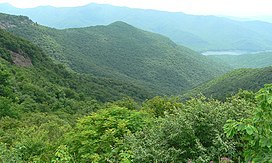
The Appalachian Mountains of North Carolina. Image via Wikipedia Commons.
The Cherokee people have a vibrant culture that is filled with deeply cherished myths, legends, and histories of their people and their ancestral home in the mountains of Southern Appalachia. According to the Cherokee, the Smokey Mountains were formed by a giant buzzard after the giant flood. The exhausted bird fell to the earth and the mountains erupted up from where the massive wings impacted the ground. In the years since the creation of the mountains the Cherokee interacted with many spirits, many creatures, and according to their oral tradition, a civilizations of people that was there before them with extremely pale white skin, fine hair, and eyes that were so sensitive to the sun that they spent the daylight hours living underground.
The first written account of these people comes from European botanist Benjamin Smith Burton (sometimes written as Barton) who wrote in 1797 that he learned about these people from the firsthand account of Colonel Leonard Marbury, an intermediary between the American government and the Cherokee tribe. Burton writes:
“…the Cheerake tell us, that when they first arrived in the country which they inhabit, they found it possessed by certain 'moon-eyed-people,'who could not see in the day-time.”
The Cherokee people had a strong belief in things most people today would consider supernatural, but in their stories of the Moon-Eyed People they were never referred to as something otherworldly. They were considered and spoken about as another culture of human beings, ones that were living in Appalachia before the Cherokee arrived. John Haywood was one of America’s earliest historians and he collected the stories that were passed down through generations of the Cherokee people. Among the stories he documented, some were similar to accounts reported by Burton, that the Cherokee arrived at the mountains and along the Tennessee River they encountered “white people” and fortifications that contained “hoes, axes, guns, and other metallic utensils.” Then there were the fortifications themselves, made of precisely arranged stone, and stretching all the way from the Tennessee River down to the Chickamauga Creek. Were these fortifications created for protection from nature or people?
The Cherokee stories do not mention finding any other civilizations of people along their travels and when these two groups met, they clashed. The text from Burton states “These wretches they expelled” and in his 1823 book Natural And Aboriginal History of Tennessee Haywood writes of “white people, who were extirpated in part, and in part were driven from Kentucky, and probably also from West Tennessee.” Writer James Mooney was familiar with the works of Burton and Hayward as well as the Cherokee oral traditions having collected stories from two Cherokee elders who told that when they first came to the region they encountered people who were “very small and perfectly white” that were then driven from the area and fled west. The story continues that the conflict took both groups of people to Big Chickamauga where an agreement was made that these “very small and perfectly white” people were not permitted back to their land and fortifications, but they were permitted to flee in peace.

The fortifications of Fort Mountain as they appear in modern day. Image via Wikimedia Commons user Thomsonmg2000.
Descriptions of the “Moon-Eyed People” continue to appear in multiple accounts collected from the Cherokee with slight variations. Some describe them as being extremely small, others say they could only see during certain phases of the moon and that they lived underground, another version describes them as tall with light-colored hair and speaking a strange language. While many historians question if these people even existed, those who believe they did have another question to answer. Who were these people? Where did they come from? A popular theory says that that answer can be found by tracing a line that stretches from Georgia across the Atlantic Ocean to Wales.
When the governor of Tennessee John Sevier visited Fort Mountain, Georgia in 1782 he met with the Cherokee’s Chief Ocotosota. At the time of their meeting Chief Ocotosota was ninety years old and when discussing the large stone fortifications standing at Fort Mountain he told the governor that his forefathers "told of the fort being built by white men from across the great water." The accounts from Chief Ocotosota were enough to convince Sevier. There was another story that claimed to tell the origin of those in the Appalachia before the Cherokee and based on the accounts of Chief Ocotosota he believed the tale to be the truth. According to this version of events the mysterious Moon-Eyed People were the descendants of a Welsh prince.
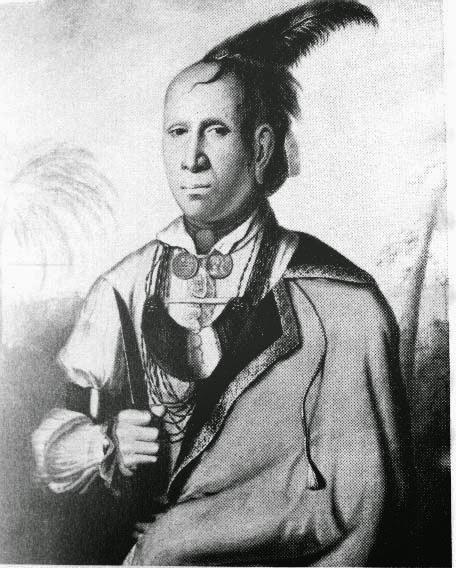
Oconostota, Cherokee chief from a painting entitled "The Great Warrior, Chief Oconostota-Cunne Shote" by Francis Parsons, 1762. Image and caption credit: Tennessee State Library and Archives
The story of Prince Madoc ab Owain Gwynedd is intriguing, but also murky. The story tells of the prince and his brother Riryd fleeing violence in his homeland and landing in North America in approximately 1170, over 300 years before the voyage of Columbus. Allegedly, they landed in what is now Mobile Bay, Alabama and made their way up the Alabama River and into the mainland where they decided to make their new home. Riryd stayed behind while Madoc returned to Wales where he amassed a fleet of ten ships filled with Welsh people who sailed away from their home and were never heard from again. When speaking about the fortifications with Chief Ocotosota, Governor Sevier was told these stone fortresses were built by those Welsh immigrants and they were all that remained of them after the Cherokee took control of the land.
There was a reason that Governor Sevier was familiar with the story of Prince Madoc and the theory of the Welsh in Appalachia, and that is because Chief Ocotosota was not the only person to speak about these early and mysterious fair-skinned inhabitants. In 1608 a crew member sailing under Captain Christopher Newport wrote a letter describing their interactions with a group of people who spoke a language that was so like his native Welsh that he served as an interpreter between the crew and tribe. Also noted was how different the customs and appearances were of these people compared to other Native Americans. Years later in 1699 the Reverend Morgan Jones reported that while he was traveling through the Carolinas he encountered and spent several months with a tribe called the Doeg who spoke and understood a variation of Welsh. Tennessee governor John Sevier took the “proof” far beyond spoken language and claimed that in 1799 a discovery was made far inland of six skeletons buried in brass armor containing the Welsh coat of arms. This claim was referenced years later by author and historian Thomas Hinde who wrote in an 1824 letter that six skeletons had “been dug up near Jeffersonville, Indiana, on the Ohio River with breastplates that contained Welsh coats-of-arms.” In another part of the country, closer to present-day North Dakota than the mountains of Appalachia, it was reported that instead of canoes the Mandan people used an ancient type of boat that originated in Wales called coracles.
The claim of a prince fleeing Wales, arriving in Alabama, and ushering in generations of Native Americans with Welsh backgrounds persisted but there was also evidence to disprove this theory. Welsh explorer John Evans spent the winter of 1796-97 living with the Mandan people who allegedly spoke Welsh and followed customs passed down through the generations after the Welsh arrived in Alabama. But, in July of 1797 he wrote to Dr. Samuel Jones “Thus having explored and charted the Missurie for 1,800 miles and by my Communications with the Indians this side of the Pacific Ocean from 35 to 49 degrees of Latitude, I am able to inform you that there is no such People as the Welsh Indians.” The argument for or against the existence of Native Americans with Welsh roots had far reaching repercussions. During territorial struggles this idea of Welsh inhabitants in the new world was proposed as a reason that England should have claim to it instead of Spain.
The problem that England had with this claim is the same problem faced today in that proving Prince Madoc arrived in Alabama all those years ago and began a Welsh settlement is a very difficult task. There is a large amount of spoken word and secondhand accounts, but the whereabouts of the skeletons encased in Welsh armor is unknown and the coracles of the Mandan people have disappeared. Tragically, the waves of disease that swept through the land with the arrival of the Europeans took a countless number of accounts with them. In 1837 alone the Mandan people were almost completely wiped out by smallpox brought in by traders.
If the theory of Welsh travelers arriving in North America and living in the Appalachian mountains before the Cherokee is false, than who were these “very small and perfectly white” people with fair hair that could not see in sunlight that were spoken of by so many different people? Another theory is that these people were not new to the land, that they were actually Native Americans with albinism. Albinism appeared among the Hopi people of the Southwest and can be seen in photographs from the 1800s showing children with light skin and hair.

Image of a Hopi child with albinism.
Image originally via The Huntington Library Museum and Botanical Gardens. Hopi Indians, Arizona. Albino in center. Hopi girls, Oraibi, Arizona. There are many Albinos among the Hopi Indians, photCL 312 (172), The Frederick Monsen Ethnographic Indian Photographs, The Huntington Library, San Marino, California.
Although the Hopi lived in an entirely different region than the people spoken about by the Cherokee, some believe that the mysterious Moon-Eyed People may have been another community of people that also lived with albinism at that time. In 1699 Welsh explorer Lionel Wafer wrote about his experience with a tribe of people living in Panama:
“There is one Complexion so singular, among a sort of People in this Country, I never saw nor heard of any like them in any part of the World. [...] They are White, and there are of them of both Sexes; They differ from the other Indians chiefly in respect of Colour, tho' not in that only. Their Skins are not of such a White as those of fair People among Europeans, [...] but 'tis rather a Milk-white, lighter than the Colour of any Europeans, and much like that of a white Horse. For there is this further remarkable in them, that their Bodies are beset all over, more or less, with a fine short Milk-white Down, which adds to the whiteness of their Skins. The Men would probably have white Bristles for Beards, did they not prevent them by their Custom of plucking the young Beard up by the Roots continually. Their Eye-brows are Milk-white also, and so is the Hair of their Heads, and very fine withal, about the length of six or eight inches, and inclining to a Curl. And what is yet more strange, their Eye-lids bend and open in an oblong Figure, pointing downward at the Corners, and forming an Arch or Figure of a Crescent with the Points downwards. From hence, and from seeing so clear as they do in a Moon-shiny night, we us'd to call them Moon-ey'd. For they see not very well in the Sun, poring in the clearest Day; their Eyes being but weak, and running with Water if the Sun shine towards them; so that in the Day-time they care not to go abroad, unless it be a cloudy dark Day. But notwithstanding their being thus sluggish and dull and restive in the Day-time, yet when Moon-shiny nights come, they are all Life and Activity, running abroad, and into the Woods, skipping about like Wild-Bucks; and running as fast as Moon-light, even in the Gloom and Shade of the Woods, as the other Indians by Day, being as nimble as they, tho' not so strong and lusty. The Copper-colour'd Indians seem not to respect these so much as those of their own Complexion, looking on them as somewhat monstrous.”
Although there may never be solid proof of Prince Madoc’s involvement in the early days of North America there are locations that firmly believe this version of events. At Fort Mountain there are multiple markers that tell the story of the Moon-Eyed People and the arrival of the prince. This is the very place where Chief Ocotosota and Governor John Sevier discussed “the fort being built by white men from across the great water” and it is one of few places that can claim to have a physical remnant of this tale. The forts and wall spoken of by Chief Ocotosota are still standing here, stretching for 855 feet and varying between two and six feet tall at different points. Archaeological estimates state that the wall was constructed between 500 –1500 BCE and those who steadfastly believe the Prince Madoc theory quickly point out that the construction of one of the fortifications located in Alabama resembles those built in Wales during the same timeframe.
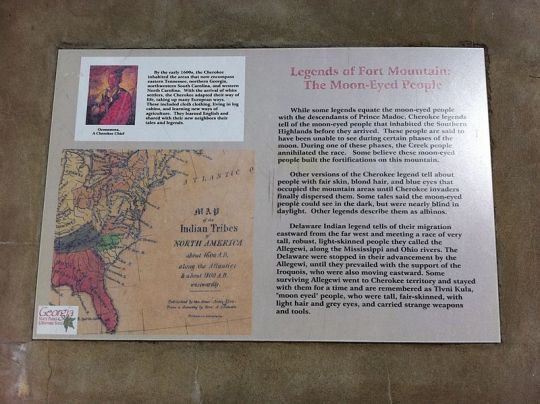
Marker in Fort Mountain State Park that tells the legend of the Moon-Eyed People. Image via Wikimedia Commons.
Although Fort Mountain claims to have the fortifications left behind by the Moon-Eyed People, the Cherokee County Historical Museum claims to have a representation of the Moon-Eyed People themselves. Standing together inside a glass case are two figures, standing three feet tall and carved from soapstone, with no hair and eyes gazing. In 1838 North Carolina Senator Archibald Murphy began selling off parcels of land in the place that would become the town of Murphy, North Carolina. A man named Felix Ashley bought a piece of land and while digging in 1841 he discovered the incredibly strange statue that now sits inside the museum. The road from dirt to display was not a fast one though, Ashley took the statue home and leaned it up against one of his buildings until it eventually made its way to the museum where it sat in storage up until 2015 when it finally saw the light of day.
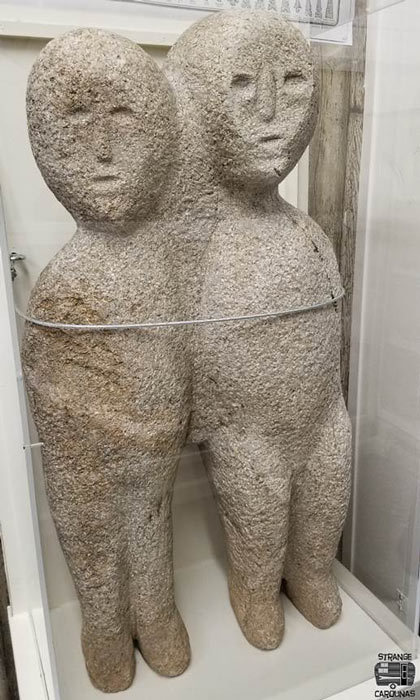
The figures of the alleged Moon-Eyed People. Image via Strange Carolinas.
Like so many aspects of the story, the statue of the two figures are said to represent the Moon-Eyed People, but there is no absolute proof of this. And, like the Moon-Eyed People themselves, there are multiple stories circulating about the origin of the statue with theories ranging from it being a simple sculpture of two people to some believing the Moon-Eyed People were extraterrestrials and this statue was carved as a tribute to them. Museum Director Wanda Stalcup acknowledges the theory of the Moon-Eyed People and the statue’s alleged connection, stating “They were a legend of the Cherokee…The Moon-Eyed People were supposed to be people who only came out at night. They were light-skinned and had big blue eyes." However, Stalcup keeps the door open to all ideas, saying simply that everyone is entitled to their opinion because no one knows what they are.
The Moon-Eyed People have been appearing in spoken word accounts and theories for hundreds of years and despite centuries of speculation as to who they are and where they came from they remain a mystery, unable to be proven or disproven. Perhaps they were Native Americans living with albinism. Perhaps they were descendants of a Welsh prince whose legitimacy has disappeared along with the many years since his arrival. Many people and locations stand strongly by their opinion, but over all the years there is one thing we can say for certain about the Moon-Eyed People.
No one knows who or what they are.
**********************************************************************************
Sources:
David Tibbs. Legends of Fort Mountain The Moon-Eyed People / Prince Madoc of Wales. The Historical Marker Database, 2008. https://www.hmdb.org/m.asp?m=11590
The Moon-Eyed People. North Carolina Ghosts. https://northcarolinaghosts.com/mountains/moon-eyed-people/
Exploring the Mysterious North American Moon-Eyed People. Ancient Origins Reconstructing the Story of Humanity��s Past. 2022. https://www.ancient-origins.net/myths-legends-americas/moon-eyed-people-0016334
Vicky Verma. Moon-Eyed People From Ancient America With Pale Skin Were Afraid Of Daylight, Why? Journal News Online. 2022. https://journalnews.com.ph/moon-eyed-people-from-ancient-america-with-pale-skin-were-afraid-of-daylight-why/
Beth Lawrence. Appalachia’s Lost Colony The mystery of the Moon Eyed settlers. The Sylva Herald and Ruralite. 2020. http://www.thesylvaherald.com/news/article_63be7a46-193a-11eb-bcb1-9b6452791b80.html
Ben Johnson. The discovery of America… by a Welsh Prince? Historic UK. https://www.historic-uk.com/HistoryUK/HistoryofWales/The-discovery-of-America-by-Welsh-Prince/
The Moon-Eyed People. Roadside America. https://www.roadsideamerica.com/story/51476
#husheduphistory#featuredarticles#history#Appalachia#AppalachianHistory#Cherokee#CherokeeHistory#NativeAmericanHistory#GeorgiaHistory#Alabama#AlabamaHistory#Unknown#UnsolvedMysteries#MoonEyedPeople#WelshHistory#weirdhistory#forgottenhistory#strangehistory#oddhistory#historyclass#truth is stranger than fiction#historymystery#historicmystery#myths#legends
6 notes
·
View notes
Photo

On the 10th of September, 1710, pirates that had invaded Port Dauphin the previous day on the Isle of Dauphine, Alabama, gained access to the Royal Warehouse; and began torturing citizens hoping for the reveal of hidden loot.
Lieutenant Philippe Blondel, the colony’s army lieutenant, and Francois Derbanne (keeper of the Royal Warehouse on Dauphin Island) had been taken hostage aboard the pirate vessel near the shore that had arrived the day prior; tricked on board to “assist them with repairs” after supposedly having run aground on a sandbar.

On September 10th, the hostages were taken back into the port, after the pirates had corralled the citizens, to unlock the Royal Warehouse. Inside was cargo meant for the next French vessel to arrive, a culmination of three years worth of work; over 8,000 deer skins, about 15,000 raccoon skins, 71 barrels of flour, and rigging, blocks and sails.
The cargo was painstakingly hauled out to the longboats, loaded and transported to the ship, over and over for two days, storing it below deck. Citizens were tortured for hopes of them revealing further hidden loot on the island, but when the pirates got nothing else for the troubles.
Local legend persists that a bejeweled cross, belonging to the Catholic Church, had been hastily hidden inside of a well, and was never discovered by the pirates, or was able to be recovered in the aftermath.
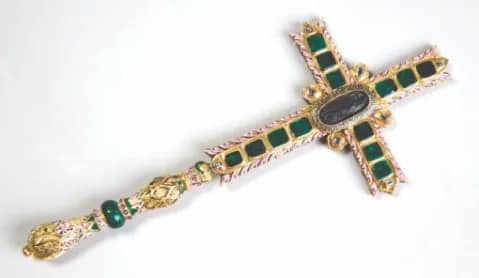
(Pictured are barrels stored in a warehouse, a 1718 map of the Isle of Dauphine, and a bejeweled cross from the 18th century from the National Museum of the Royal Navy)
#pirates#pirate#pirate history#18thcentury#alabama#dauphin island#Dauphine#map#cross#history#ushistory#alabamahistory
29 notes
·
View notes
Photo

Get your copy of the new issue today and read an article honoring a Smith Lake 1st patrolman, Lt. Guy Hudson Rutledge! 〰️〰️🚨〰️〰️ REPOST - “This magazine. This article. My daddy. My hero. Thank you @thelakesidelife_smithlake for immortalizing his legacy for my family’s future generations. I’ve never been more proud. 🥲” - 📷 @thebockholds <~~~😘💕 〰️〰️❤️〰️〰️ @aleaprotects @alabamapower #smithlakecoolpeople #smithlakepeople #smithlakehistory #alabamahistory #lake #lakelife #marinepatrol #peopleofalabama #alabama #alabamalakes #alabamalife #smithlakecommunity #smithlakesocial #lakeliving #lakeside #lewissmithlake #lifeonthelake #lifeonsmithlake #livelovelake #livinglakelife #livelifelakeside #visitsmithlake #smithlake #smithlakeal #smithlakealabama #smithlakepix #smithlakelife #smithlakemagazine #thelakesidelifemagazine #thelakesidelife (at Smith Lake, Cullman al) https://www.instagram.com/p/CXrEjGSr7ch/?utm_medium=tumblr
#smithlakecoolpeople#smithlakepeople#smithlakehistory#alabamahistory#lake#lakelife#marinepatrol#peopleofalabama#alabama#alabamalakes#alabamalife#smithlakecommunity#smithlakesocial#lakeliving#lakeside#lewissmithlake#lifeonthelake#lifeonsmithlake#livelovelake#livinglakelife#livelifelakeside#visitsmithlake#smithlake#smithlakeal#smithlakealabama#smithlakepix#smithlakelife#smithlakemagazine#thelakesidelifemagazine#thelakesidelife
0 notes
Photo




These Historical Photos Show Montgomery, Alabama In The Early 20th Century
#montgomery#alabama#alabamahistory#montgomeryhistory#ohiohistory#oldhouse#historyinpictures#historyphotos#1900s
0 notes
Photo

Reposted from (gettyimages) "Today I want to tell the city of Selma, today I want to say to the state of Alabama, today I want to say to the people of America and the nations of the world, that we are not about to turn around. We are on the move now. Yes, we are on the move and no wave of racism can stop us. We are on the move now. The burning of our churches will not deter us. The bombing of our homes will not dissuade us. We are on the move now. The beating and killing of our clergymen and young people will not divert us. We are on the move now. The wanton release of their known murderers would not discourage us. We are on the move now. Like an idea whose time has come, not even the marching of mighty armies can halt us. We are moving to the land of freedom." Speaking on this day in 1965, Martin Luther King Jr addresses some 25,000 people who had joined him on the third and final march from Selma to Montgomery. See (gettyarchive) for archival footage from the event or follow our bio link for more coverage. The civil rights leader is pictured here marching with (r-l) John Lewis, Reverend Jesse Douglas, James Forman and Ralph Abernathy, as captured by (schapirophoto) 📷: Steve Schapiro/Corbis via Getty Images | March 1965 | GettyImages25 PreservingThePast GettyArchive⠀ ⠀ #martinlutherking #steveschapiro #MLK #martinlutherkingjr #selmatomontgomery #selma #montgomery #civilrights #africanamericanhistory #americanhistory #blackhistory #1965 #onthisdayinhistory #onthisday #photojournalism #votingrightsact #alabamahistory #alabama #UShistory #historyphoto #historyphotographed #ralphabernathy #archivephoto #photoarchive #vintagephoto #photolibrary #gettyimages #40acres (at Selma, Alabama) https://www.instagram.com/p/B-YbFYJlkbs/?igshid=npravhz7l2ur
#martinlutherking#steveschapiro#mlk#martinlutherkingjr#selmatomontgomery#selma#montgomery#civilrights#africanamericanhistory#americanhistory#blackhistory#1965#onthisdayinhistory#onthisday#photojournalism#votingrightsact#alabamahistory#alabama#ushistory#historyphoto#historyphotographed#ralphabernathy#archivephoto#photoarchive#vintagephoto#photolibrary#gettyimages#40acres
0 notes
Photo

Shared from @ruralswalabama . Dale Masonic Lodge at Camden (c. 1848) - The Dale Masonic Lodge organized at Dale Town (later Prairie Bluff) in 1827. When the town declined in the 1840s, members voted to move the lodge to Camden. The Dale Masonic Lodge building that’s shown was built circa 1848. Union troops camped in this building while passing through Camden in 1865. In 1936, the building was photographed and recorded in the Historic American Buildings Survey (HABS). In 1939, it was recorded by the pioneer female photographer, Frances Benjamin Johnston, in the Carnegie Survey of the Architecture of the South (CSAS). ⚫⚫⚫ . #masoniclodge #camdenalabama #alabama #alabamablackbelt #alabamahistory #alabamaheritage #thisisalabama #onlyinalabama #ruralswalabama #thesouth #theoldsouth #alabamaarchitecture #rswal_camden #explorethesouth #antebellum #vanishing #camdenalabama, #BrickStory, #storystylesoul, #historicpreservation, #househistory, #preservation, #historichome, #oldhouselove, #architect, #americanhistory, #thisoldhouse, #storyteller, #dreamhome, #travelamerica, #instahouses Tell us your story... (at Camden, Alabama) https://www.instagram.com/p/Bz_pWXjDWye/?igshid=1pc5311s6438j
#masoniclodge#camdenalabama#alabama#alabamablackbelt#alabamahistory#alabamaheritage#thisisalabama#onlyinalabama#ruralswalabama#thesouth#theoldsouth#alabamaarchitecture#rswal_camden#explorethesouth#antebellum#vanishing#brickstory#storystylesoul#historicpreservation#househistory#preservation#historichome#oldhouselove#architect#americanhistory#thisoldhouse#storyteller#dreamhome#travelamerica#instahouses
0 notes
Photo

Fun fact: this song is where I created my famous beat tag that everyone started replicating years later. "Its lil jj who the fuck you think it was?" #alabama #bama #alabamamemes #alabamahairstylist #alabamaartist #alabamastylist #alabamaphotographer #alabamahistory #alabamahair #alabamamusic #alabamagirls #alabamamodel #alabamamodels #alabamalife #bamalife #bamanation #bama2018 #bama2018magazine #builtbybama #bamahiphop #bamarap #alabamarap #alabamarapper #alabamahiphop #alabamahiphophonors #alabamahiphopweek https://www.instagram.com/p/BvUdsmuAfd3/?utm_source=ig_tumblr_share&igshid=1lum9de4xjp2p
#alabama#bama#alabamamemes#alabamahairstylist#alabamaartist#alabamastylist#alabamaphotographer#alabamahistory#alabamahair#alabamamusic#alabamagirls#alabamamodel#alabamamodels#alabamalife#bamalife#bamanation#bama2018#bama2018magazine#builtbybama#bamahiphop#bamarap#alabamarap#alabamarapper#alabamahiphop#alabamahiphophonors#alabamahiphopweek
0 notes
Photo

⭐️Serpents is open 12-7 today!⭐️ The Hurricane of 1916 came to its most powerful moment at 4:45 on July 5th, 101 years ago today, creating overwhelming devastation for the city of Mobile and the Eastern Shore. The 11.6 foot swells are the second largest the state of Alabama has ever seen, ranking just below the Hurricane of 1906 reaching 11.8 feet, and just above Hurricane Katrina hitting 11.4 feet. In this photo, Mobile citizens survey Dauphin Street at the intersections of Royal and Water for damages, amounting to nearly $15 million in total for the coastal area. . . . #theserpentsofbienville #alabamahistory #todayinhistory #hurricaneseason #mobilealabama #southern #Alabama (at Serpents of Bienville)
#southern#mobilealabama#theserpentsofbienville#alabama#todayinhistory#hurricaneseason#alabamahistory
1 note
·
View note
Photo

Dexter Avenue Baptist Church April 15th, 2017 (parked across street so I could get steeple this time) #martinlutherking #civilrights #historical #blackhistory #montgomeryalabama #dexteravenue #mlkjr #mlk #baptistchurch #alabamahistory #beautiful #pretty #nationalhistoricallandmark (at The Crows Nest In Capitol Heights)
#montgomeryalabama#beautiful#historical#mlk#martinlutherking#blackhistory#nationalhistoricallandmark#alabamahistory#mlkjr#baptistchurch#pretty#dexteravenue#civilrights
1 note
·
View note
Photo
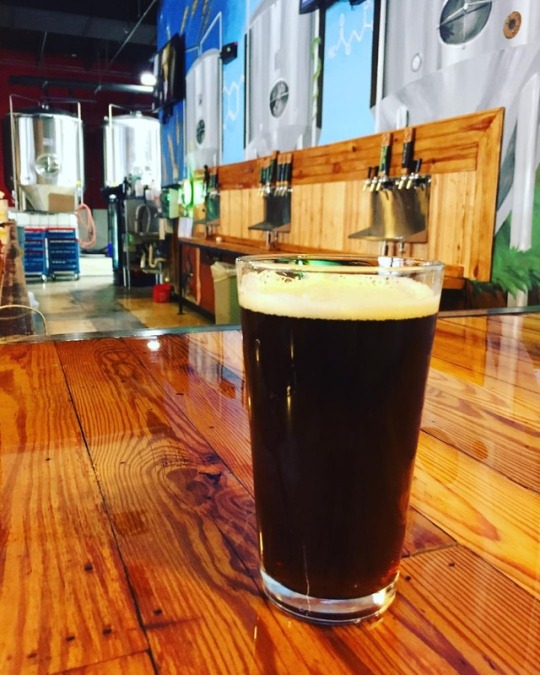
Come out to @redhillsbrewingco and try their amazing RedTails Red Ale. What a great way to support Black History Month...the beer is amazing and the story behind the name is inspirational #redhillsbrewingco #redtails #blackhistorymonth #alabamahistory #craftbeerinalabama #southernbrews (at Red Hills Brewing Company)
0 notes
Photo
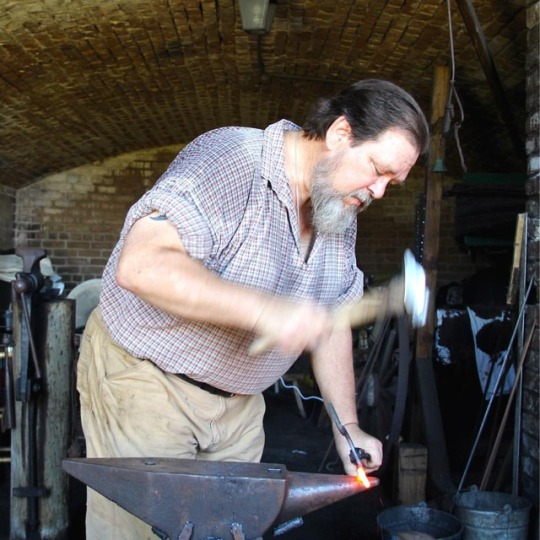
#fortgaines #blacksmith #civilwar era #armylife #fort #alabamahistory #360magazine (at Fort Gaines, Alabama)
0 notes
Photo

Bethel School - another local #historiclandmark visit for our son’s school project. Located on the Hwy 12 loop (Wilson Bend Road) near #sipseypines . 〰️〰️📚〰️〰️ #bethelschool - first known school in the greater Arley Community. This site is also known as the Old Bethel Church property and cemetery. 〰️〰️🔵〰️〰️ #spotsonsmith #smithlakebackroads #heartofsmithlake #alabamahistory #smithlakehistory #smithlakelandmarks #alabama #alabamalakes #alabamalife #smithlakecommunity #smithlakesocial #lakeliving #lakeside #lewissmithlake #lifeonthelake #livelovelake #livinglakelife #livelifelakeside #visitsmithlake #smithlake #smithlakeal #smithlakealabama #smithlakepix #smithlakelife #smithlakemagazine #thelakesidelifemagazine #thelakesidelife (at Smith Lake , Arley AL) https://www.instagram.com/p/CTFItIiLGjW/?utm_medium=tumblr
#historiclandmark#sipseypines#bethelschool#spotsonsmith#smithlakebackroads#heartofsmithlake#alabamahistory#smithlakehistory#smithlakelandmarks#alabama#alabamalakes#alabamalife#smithlakecommunity#smithlakesocial#lakeliving#lakeside#lewissmithlake#lifeonthelake#livelovelake#livinglakelife#livelifelakeside#visitsmithlake#smithlake#smithlakeal#smithlakealabama#smithlakepix#smithlakelife#smithlakemagazine#thelakesidelifemagazine#thelakesidelife
0 notes
Photo




Rare Historical Photos Of old Mobile, Alabama From Early 20th Century
#mobile#mobilealabama#mobiehistory#alabamahistory#MobileAL#mobilealabamahistory#history#historic#historical#vintage#american#usa#historyphotos#vintagephotography#architecture#cityscape#streetphotography#streetscenes
0 notes
Photo

Live from @tonydavisthedj2day - OUT NOW @tski334 "Before And After" V2 Hosted By #TDDJ | AVAILABLE NOW : #ALABAMAHISTORY #DOTHAN #GMG via @mymixtapez @tapehustlers @livemixtapes @indytapes @spinrilla #MYMIXTAPEZ #tapehustlers #LIVEMIXTAPES #SPINRILLA #tddj2day #Tddjmixtapes #coolrunningsdjs #TeamBiggaRankin - #regrann
#tddj2day#teambiggarankin#livemixtapes#tapehustlers#alabamahistory#tddjmixtapes#dothan#spinrilla#regrann#mymixtapez#coolrunningsdjs#gmg#tddj
0 notes
Photo

We need to get past those gates - as pretty as they are. Thanks for the BrickStory.com tag! . Shared via @lorrainereedhsval . The John D. Weeden house was built in 1871 and is located in the Twickenham Historic District. Weeden was a brother of internationally known poet and artist, Marie Howard Weeden. . #twickenhamhistoricdistrict #huntsvilleal #madisoncoal #federalstyle #preservation #oldhouselove #historichouse #alabamaarchitecture #alabamahistory #weedenhouse #brickstory #beautifulhouseoldandnew #nikond5100, #storystylesoul, #architecture #historicpreservation, #househistory, #travelamerica, #vintage, #preservation, #historichome, #americanhistory, #americanpride, #thisoldhouse, #myhouse, #ancestry, #storyteller Tell us your story.... (at Huntsville, Alabama) https://www.instagram.com/p/Bq8XDjpAuTJ/?utm_source=ig_tumblr_share&igshid=gj8pfsmgtjb8
#twickenhamhistoricdistrict#huntsvilleal#madisoncoal#federalstyle#preservation#oldhouselove#historichouse#alabamaarchitecture#alabamahistory#weedenhouse#brickstory#beautifulhouseoldandnew#nikond5100#storystylesoul#architecture#historicpreservation#househistory#travelamerica#vintage#historichome#americanhistory#americanpride#thisoldhouse#myhouse#ancestry#storyteller
0 notes